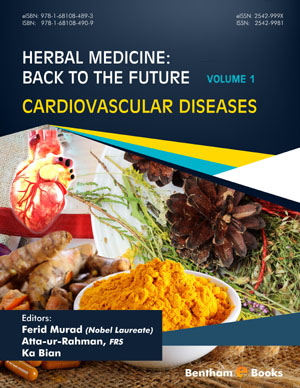Abstract
Cardiovascular disease (CVD) is a major health problem worldwide with high morbidity and mortality. A lot of effective treatments with various classes of pharmaceutical synthetic drugs have shown significant benefits for controlling and preventing CVD on individuals with high CVD risks. Apart from these pharmacological agents, herbal medicines also are gaining their roles in the clinical practice in terms of CVD therapy and prevention. Herbal medicines represent the main therapeutic approaches of evidence-based complementary and alternative medicine for CVD and can be tracked back thousands of years ago in ancient China. Although more systematic, well-designed experimental and randomized clinical studies with sufficient sample sizes are essential to further explore the exact pharmacological mechanisms of herbal medicines and to validate their safety and pharmacokinetics, promising therapeutic effects against CVD are already evidenced from a number of herbs and herbal formulas containing potent ingredients. In this chapter, we focus on the significant effects and potential underlying mechanisms of some key herbal medicines, especially Chinese herbal formula Naoxintong, in the treatment of CVD, based on clinical and basic science reports, which might help to shed light on further exploration and clinical application of herbal medicines with cardiovascular protective effects.
Keywords: Cardiovascular disease, Coronary heart disease, Ferulic acid, Herbal medicine, Herbal formula, Naoxintong, Paeoniflorin, Salvianolic acid B, Stroke, Tanshinone IIA.






















